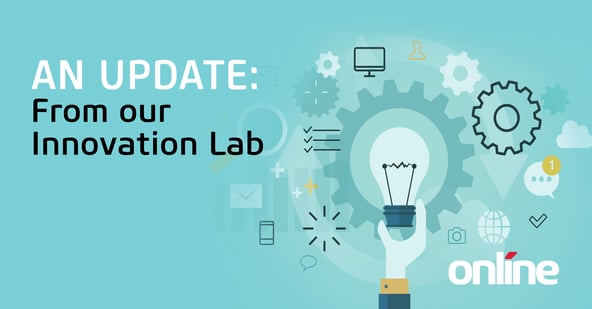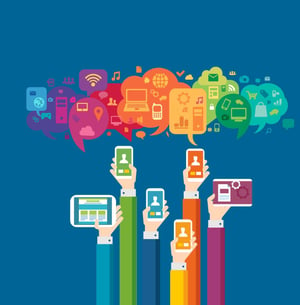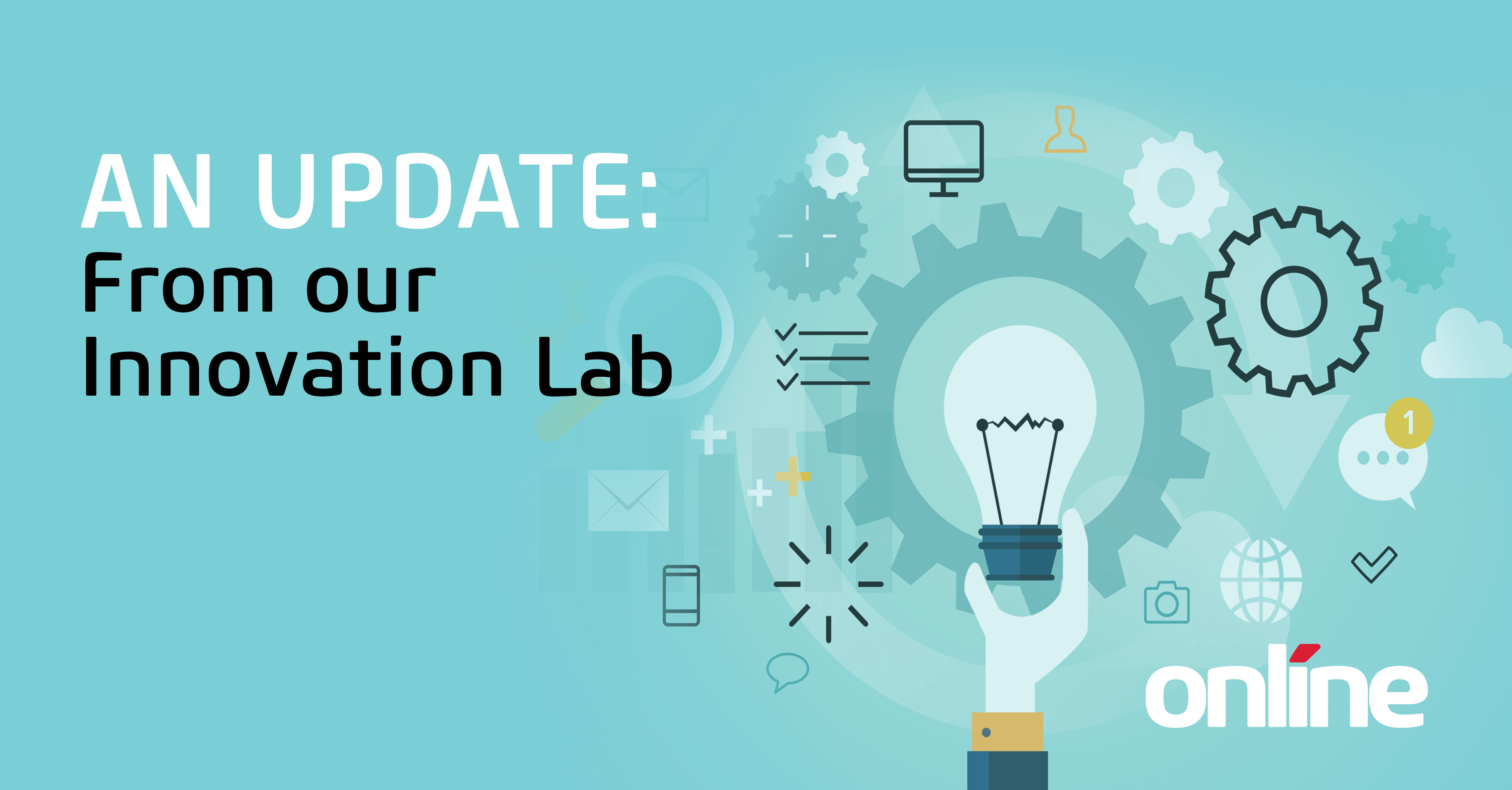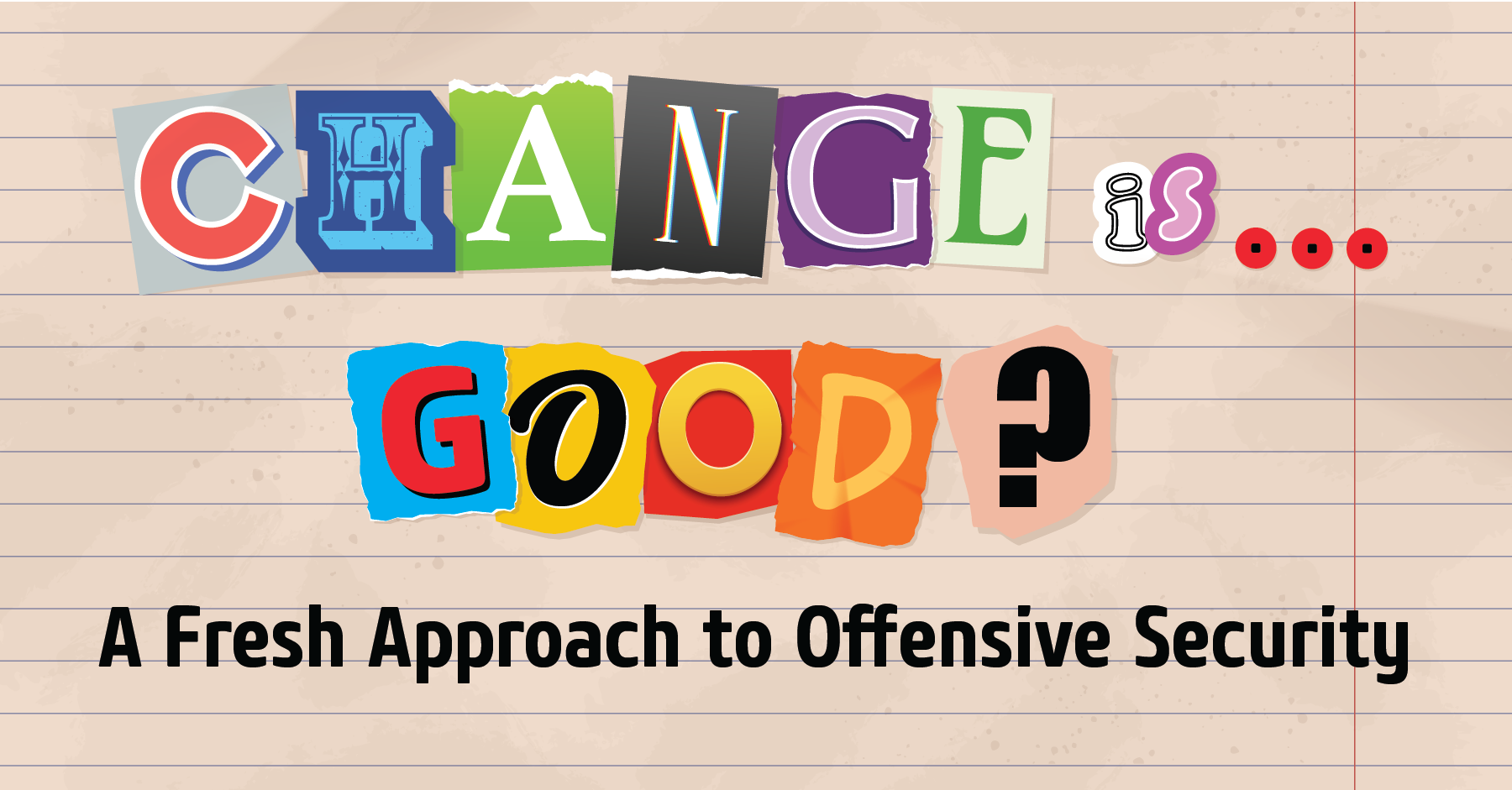Tim Siemens
As Online’s Chief Technology Officer (CTO), I have the pleasure of working closely with our clients and Onliners (a term we use for Online’s employees) to identify trends that are impacting business. This is a challenging and satisfying activity that occupies some of my attention each week.
Challenging as we look at trends; not only do we have to consider the emergence of new technologies, but how these technologies meet the needs and goals of Online’s diverse client base, across many different industries. Satisfying in that there are many innovations emerging that can make substantive changes for growth, profitability, and overall satisfaction.

These trends fuel much of the work we do in our Innovation Lab which is staffed by Onliners with expertise across various practice areas including Customer Experience, Digital Studio, and Cybersecurity.
When trends meet innovation: Innovation Lab investigations from 2020
In 2020, our Innovation Lab focused on three key areas of investigation:
- Leveraging Artificial Intelligence (AI) to monitor residential security systems for anomalies
- Using Natural Language Processing (NLP) and Knowledge Graphs to ingest and process business documents to create a flexible knowledge system we have named Mottain.ai
- Enhancing customer experience interactions by using Chatbot, Natural Language Processing and Understanding (NLP, NLU), coupled with Voice-to-Text and Text-to-Voice
1. Leveraging AI to monitor residential security systems for anomalies
Our AI team has been developing distributed cloud application concepts, one of which benchmarked various AI approaches to identify anomalous patterns in sensor events streamed by a Home Security system.
 Outcome:
Outcome:
The Innovation Lab team created a solution to feed the system’s AI agent a stream of millions of sensor events (motion detection, window/door open) that it uses to learn normal patterns of movement within the house. For example, the AI agent can detect a pattern of motion that appears highly unlikely based on the learned behaviour of occupants for day of week/time. Imagine movement beginning in an area of the house, at an unusual time, without seeing the usual events leading to that activity - suggesting a break in behaviour and a possible security concern. The agent passes the concern to the system for handling and escalation. Extensions to the model would detect a safety issue such as an elderly occupant who has had a fall and is not able to follow their normal behaviour patterns.
Process and Observations:
Using a system we had built previously, the team was required to train the AI agent to generate models deployed to run on lower-powered edge devices, such as a Raspberry Pi. The solution combined elements of Distributed Cloud/Cloud to the Edge, IoT, Data Science and Machine Learning (ML).
While we initially thought that developing an AI agent to execute on a low powered edge device might be challenging, it actually proved to be quite straightforward once coupled with some of the math innovations from the development team. We were able to successfully train the AI agent in the cloud using telemetry aggregated by the security system cloud monitoring solution, and create an agent deployable down on the edge device, sending notification events identifying suspected anomalies.
This research has been ongoing for the past 3 years at Online, in conjunction with the NRC. Our team has learned many lessons around data science, data quality, appropriate ML model selection, and model tuning which have informed our approach to building AI agents.
2. Natural Language Processing, Information Extraction, and Knowledge Graphs
Online’s Innovation Lab has extensively invested in the area of NLP, Information Extraction (IE), and Knowledge Graphs in the last year as we have developed a system we call Mottain.ai.
 Outcome
Outcome
With the Mottain.ai platform, Online has built a system that can:
- Ingest documents in a variety of forms, including Microsoft Word, Excel, and PDF.
- Decompose these semi-structured documents into their logical structure.
- Extract relevant concepts from the documents.
- Populate a Graph database (e.g., Amazon Neptune) containing the concepts, objects, and the interrelationships between them.
- Search and visualize that knowledge.
The initial use case was focused on ingesting Onliner resumes into a Graph Knowledge base. With Mottain.ai, an Online knowledge worker can explore the Graph Knowledge base using graph visualization tools. The search results are displayed in a Graph Network visual written in React, allowing the user to fully explore the relationships within data, such as what experience an Onliner has or what skills they possess.
Process and Observations
There have been many advancements over the last years for NLP, including available libraries and data sources such as Bert (Google), and more recently Openai GPT3. These libraries can be used to extract information from primarily short sentences, or of paragraph length but there was no ability to apply them to large corpus, such as many page documents. Most algorithms available rely on flowing, general language narrative with normal grammar rules, and breakdown when presented with terse lists and domain-specific technology. Mottain.ai was targeted to handle the larger document types, and extract that information into a structured store for access and inference, in our case the Graph database. To create Mottain.ai, Online used cloud services from Amazon, coupled with custom document ingestion and segmentation modules and Python NLP libraries to analyze, decompose, and extract the information.
To create a system for extracting structured information from unstructured documents we quickly realized we needed to spend time examining the layout of the source document to properly consider how headings and visual areas of the document would be extracted accurately.
Another major takeaway was how Graph Technologies can be used to apply Agile principles to the creation of the structured store in a bottom-up fashion. Many knowledge extraction exercises have focused on a more top-down approach to Ontology construction. Graph approaches allow there to be a more rapid adaptation of the Knowledge graph.
For 2021, we will be deploying the Mottain.ai Resume use case into production with an expanded user base and extending it to handle arbitrary document collections.
3. Customer and Employee Experience
COVID-19 accelerated the digital engagement experience trend, and today almost all of our clients are working on some form of client or employee engagement project.
At Online are continually looking to connect Onliners to work in a virtual world, and so in 2020 our Innovation Lab team launched an initiative to build NEO (News and Everything Online) mobile app aimed at improving the Onliner experience.
 Outcome
Outcome
NEO was designed to fit seamlessly into the day-to-day life of an Onliner. By targeting a mobile app, we focused on providing Onliners with an authentic “Online experience” that they can take with them wherever they go, whether that is working from home, consulting on a client site or working from one of our offices. With NEO, Onliners can not only receive basic directory and corporate communications, but NEO will connect Onliners to current “Online university” content and provide a platform for knowledge sharing.
Process and Observations
NEO was created using React Native, with a single codebase for both Android and iOS. NEO uses GraphQL for integration to Active Directory and Microsoft Exchange for a single source of truth for Onliner information. It leverages Single Sign-on (SSO) integrated with Multi Factor Authentication (MFA), push notifications for important events, and a back office CMS applications for rapid publishing of new content to Onliners.
We built NEO by integrating select cloud and mobile technologies to follow a “digital first, remote first” mantra necessitated by 2020’s COVID constraints. Security is a first order consideration in all the development Online does and played a major part in the final architecture.
NEO is our platform for supporting omnichannel interaction including: voice access thru a contact center, chat, Conversational User Interfaces delivered via social, chat, NLP, NLU, Voice-to-Text, Text-to-Voice, and Knowledge Graph access, visual interfaces using web or native app, and a combination of all of the above. In the future, NEO will be expanded to include a number of these new channels as well as an integration to Mottain.ai.
The first release of NEO is expected to be available for download in the next couple of weeks.
Innovation doesn’t sleep: Trends we’re focusing on in 2021
Online’s investment over the past year has positioned us well for many of the trends in 2021 and future. Our Innovation Lab team is currently looking at investigation projects in four areas:
1. Total Experience:
COVID-19 has created opportunities for systems that improve the overall experience of Customers and Employees. It is no longer enough to engage users in siloed applications using primarily visual systems such as Mobile apps or Web UI’s. The user journey needs to be omnichannel and integrated across business functions, and visual interfaces are being supplanted by Conversational User Interfaces (both chat and voice), and augmented by Virtual or Mixed Reality.
Our Innovation Lab will look at voice-enabled access to NEO whereby Onliners can query our knowledge database for answers to questions they have. E.g., the status of their benefits, or how to contact specific subject matter experts.
 2. Compliance Reporting:
2. Compliance Reporting:
A potential application for Mottain.ai in 2021 will be to extend an organization’s “security mesh” through the extraction of information from a variety of regulatory compliance reports derived from institutional knowledge, and then enabling the subsequent reasoning to identify areas that require remediation of compliance for non-conformity.
This type of reasoning couples the expertise of professional analysis as represented in documented findings with the analytic portion that generates advisements to address any shortcomings.
 3. Data Quality and AI Readiness:
3. Data Quality and AI Readiness:
A Machine Learning model is only as good as the data with which it is trained. Partially correct data cannot produce reliable inferences, akin to garbage-in garbage out, but on a massive scale. As many companies are moving to gain insights from the variety of siloed data within their separate systems, the task of ensuring the source data is correct and complete becomes a process in and of itself.
Our Innovation Lab will be increasing our focus and expanding our current capability on the underlying skills and methods needed to ensure data readiness for AI, as well as formalizing the data readiness process we have developed in the Innovation Lab and elsewhere.
 4. AI Enablement for Salesforce:
4. AI Enablement for Salesforce:
Einstein, the AI capability service within Salesforce, uses Salesforce data to enable actionable predictive analytics, NLP, and machine learning. Einstein can be used in a variety of use cases, for example, measuring and analyzing service interactions to predict customer churn, or service provision problems.
Our Innovation Lab is translating our AI knowledge to Einstein to apply Einstein’s capabilities optimally to help clients with measuring and actioning their key imperatives.
Onward and Upward
There is never a dull moment when you spend time thinking about how technology advances can be applied to create great business value. Online continues to invest and work with our clients to solve the thorniest of business problems. And we love it! I invite you to share how you're organization is harnessing these trend, and always welcome your feedback and questions. Feel free to send me at note:
About Online’s Innovation Lab:
Online’s Innovation Lab conducts applied research and development investigations with multi-disciplinary teams of Onliners, working The closely with our clients to help them solve difficult business problems and augment their own innovation areas.
About Tim Siemens:
Tim is a recognized authority in the information technology industry. With more than 25 years of experience, he is an expert in the latest technologies, leading architectures, and technical infrastructures that underpin integration strategies and solutions. He has extensive experience in defining mission-critical enterprise architectures for complete solutions that integrate multiple systems.
Tim oversees the architectural direction taken on Online developed solutions, and leads Online’s research and development activities.
He is the executive leader of Online’s Innovation Lab where he directs research in areas such as Artificial Intelligence (AI), Conversational User Interfaces, and Blockchain.






Submit a Comment